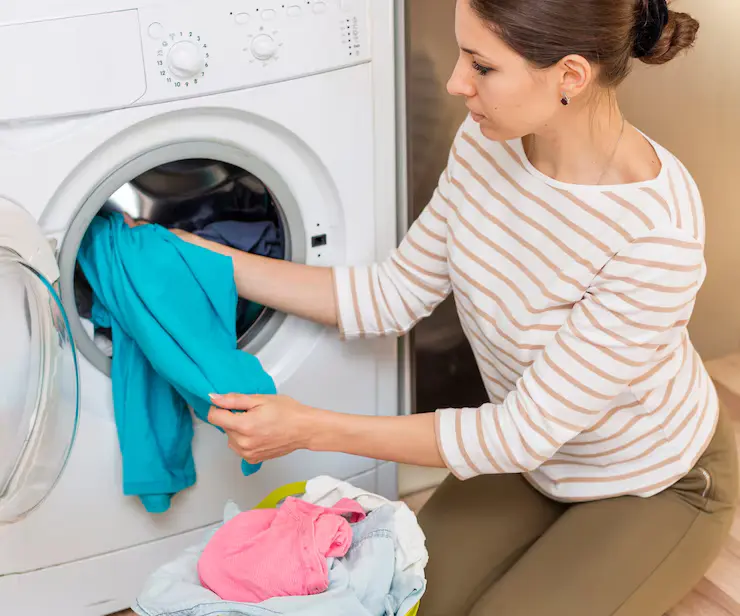As a tenant, it is vital to carefully evaluate how the laundry options fit into your objectives, needs, and way of life. That’s where an in-unit laundry comes in. The ease of doing laundry in the comfort and seclusion of one’s apartment is provided by in-unit laundry, often seen as a premium amenity in apartment living. Due to their ease of use and convenience compared to standard laundry rooms or launderettes, renters highly desire in-unit laundry.
The convenience of in-unit laundry can come with higher rent and additional utility bills. Residents are also typically responsible for upkeep and repairs. What, then, are the advantages and disadvantages of in-unit laundry? Read on to find valuable answers to this question and learn other tips for adding an in-unit laundry.
Pros of Adding In-Unit Laundry
Convenience
Nothing compares to the simplicity and ease of laundry when a washing machine and dryer are next to your unwashed items’ hamper. By having in-unit laundry, you won’t have to carry baskets of laundry supplies, detergent, and other items back and forth from the laundromat. You can even use the washer as a filthy laundry hamper when you start each load of laundry.
With in-unit washing, you may also clean your items whenever it’s most convenient for you and however you see fit. Consider saving it all for a Sunday afternoon when you’re not too busy, or do it one load at a time during the week. You also won’t have to wait excessively for someone to empty their dryer or compete with other renters for space.
Cost Savings
In-unit washing removes the need for cash or laundry cards, common in shared laundry situations, from the tenant’s point of view. An average trip to the laundromat will cost you $2 per load in most of the country. Its cost is almost twice as much in certain cities. That implies you should budget between $4 and $8, for example, to wash and dry your whites. It’s simple to understand how quickly those figures may mount up when considering all the clothes you need to wash.
One of the main benefits of in-unit washing is that there are no machine fees to worry about. Bay Property Management Group Washington, DC suggests choosing an energy-efficient in-unit laundry option to lessen utility costs. While additional costs may be associated with in-unit washing, the cost per load is typically significantly lower than using the shared facilities or traveling to the laundromat for your clothes.
Cons of Adding In-Unit Laundry
Increased Utility Costs
When it comes to utility bills, you probably won’t save as much money if you have in-unit washing because you won’t have to search for loose coins whenever you need to wash a load. Depending on local rates, running your laundry machine and dryer twice a week might add $100 to $200 to your annual utility bill. The convenience of in-unit washing will appeal to those who, like 31% of the population, wash their clothes daily, yet the cost could increase by up to $700 annually. Additionally, residents bear the cost of water and energy used for laundry on their own.
Space Requirements
The space inside the flat is lost when in-unit laundry is installed. This could be a severe disadvantage in places where space is premium. Architects and designers had to decide whether to build a separate laundry room that might have been utilized for other amenities or take up space inside each unit for washers and dryers, which takes up more living space. Certain situations might result in cramped kitchens and toilets, smaller rooms, or smaller storage space. Some may realize that an in-unit laundry can bring inconvenience for a small rental space.
Maintenance Responsibilities
If something goes wrong with your laundry machines, you’ll need to get someone to fix it. The landlord may pay for the repairs, depending on the terms of your lease. In this scenario, you will not be required to pay the repairman; instead, you will be in charge of making an appointment for servicing. Landlords may, however, imply that tenants are probably in charge of maintaining and fixing these machines. If a washer or dryer breaks down, tenants may have to pay more and deal with more difficulty.
How Does Adding In-Unit Laundry Impact Rental Rates?

Perform a simple cost-benefit analysis before installing in-unit laundry facilities in a rental property. This analysis compares the appliance’s original cost to the possibility of higher rental rates. When a washing machine is included, it’s usually considered a value-added feature that can support a higher rental cost, especially in countries where in-unit laundry services are not standard. The brand, model, and place of purchase all significantly impact the initial cost of a top-loading washer.
While some landlords might want to invest in a higher-end machine that promises durability and energy efficiency, which could eventually result in running cost savings, others might choose to go with more affordable versions to minimize upfront costs. The washer costs money up front, but the higher rental rates will bring in more money over time. In general, landlords can charge more for apartments with in-unit laundry facilities. This is particularly true in cities, where laundromats could be inconvenient, especially in weather-prone regions, where going outside to do laundry becomes a hassle.
Small families and working professionals may be more interested in properties that cater to their needs since they place a high value on the ease of in-home laundry. On the other hand, the value may not be as high in the student renting market due to smaller budgets and different objectives, which could lead to a longer time frame for recovering the initial outlay.
Conclusion
The laundry area is one feature that many prospective tenants look for the most while looking for the ideal apartment. The ability to wash laundry in the comfort and seclusion of one’s apartment is a convenience that in-unit laundry offers—often seen as a premium feature. A renter’s choice of flat with in-unit laundry should not be made quickly, since it will affect several elements of their life, including time management, comfort, and finances.
You now have a better idea of the possibilities that potential tenants can use to guide their selection of living arrangements. Knowing the effects of each laundry setup is essential to helping you make an informed choice, whether you’re searching for a more affordable option with community benefits or want convenience and privacy above all else.









